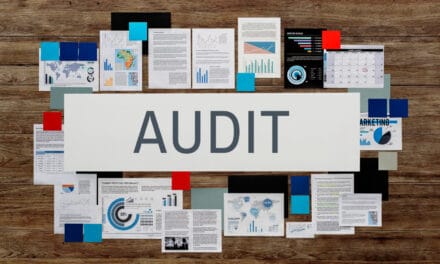In the digital marketing world, links are key to how websites are ranked and found. The right links can help a site rise in search engine rankings, increase visibility and get organic traffic. But not all link building strategies are created equal. While ethical methods lead to long term success, unethical shortcuts lead to devastating consequences. These unethical practices are known as black hat SEO and may give you short term gains but come with big risks. From toxic backlinks that harm your credibility to harsh Google penalties that can wipe out years of work, the risks are real and big.
Knowing what black-hat link building is and how it affects businesses is crucial for anyone who wants to succeed online. While the promise of quick results can be tempting, the reality is that shortcuts lead to setbacks. This article will cover the most common black hat techniques, the risks they pose and what businesses should do instead to build sustainable visibility. By focusing on the right practices, brands can grow their online presence without compromising their reputation or search engine rankings.
What Is Black-Hat Link Building?
Black hat SEO means tactics that deliberately try to manipulate search engine algorithms to get rankings unfairly. In link building context, it means practices that violate search engine guidelines. Examples are buying links, joining link farms or using automated software to generate backlinks. While these methods may give you the illusion of authority, they often result in toxic backlinks that provide no real value.
The biggest danger is that search engines like Google have ways to detect manipulation. Once detected, sites using these tactics will get Google penalties that will reduce their visibility. These penalties can range from demotion in rankings to complete removal from search results. Knowing that black hat methods are not just frowned upon but actively policed explains why ethical link building is the smarter choice for long term growth.
The Illusion of Short-Term Success
One of the reasons businesses are drawn to black hat SEO is the promise of fast results. Buying hundreds of backlinks or joining link networks can make rankings shoot up quickly. For businesses looking to see immediate growth, these tactics seem like a solution. But the boost is often temporary, as search engines quickly figure out what’s going on. Once they do, the very links that caused the spike become toxic backlinks dragging down the site’s authority.
The aftermath is costly. Not only will a business lose the rankings it gained, but it may also get hit with Google penalties that make recovery hard. Cleaning up a profile polluted with bad links is time consuming and resource intensive. In many cases it takes longer to recover from black hat strategies than it would have taken to grow organically with white hat methods. The short term gains are just not worth the long term damage.
Common Black Hat Link Building Practices
There are many black hat tactics and they all come with risks. One common one is buying links in bulk from shady providers who promise quick results. Another is joining PBNs where multiple sites exist just to pass links back and forth. Both create toxic backlinks that add no value to the web.
Other black hat methods include comment spam, link exchanges with irrelevant sites and using automated tools to generate backlinks at scale. While these tactics may trick search engines in the short term, they are getting easier to detect. Once discovered they often lead to Google penalties that are hard to reverse. Recognizing these tactics for what they are; shortcuts; helps businesses avoid getting into traps that harm their reputation and performance.
The Role of Toxic Backlinks
The term toxic backlinks refers to links that damage a site’s reputation in the eyes of search engines. These links usually come from irrelevant, low-quality, or spammy websites. Black-hat link building often creates exactly this type of profile, filled with harmful associations rather than valuable endorsements. Instead of signaling trust and authority, toxic links alert Google that manipulation is taking place.
When too many of these links point to a site, the risk of Google penalties increases significantly. The problem is that it is not always obvious when a backlink is toxic. Businesses engaged in black hat SEO may not realize the damage until rankings start to collapse. Once identified, the links must often be disavowed or removed, a process that takes considerable time and expertise. This highlights why prevention; avoiding black-hat tactics in the first place; is always preferable to cure.
The Impact of Google Penalties
Few setbacks in digital marketing are as damaging as Google penalties. They can take several forms, from algorithmic demotions to manual actions applied by Google’s quality review teams. In either case, the effect is the same: drastically reduced visibility and lost traffic. Sites using black hat SEO techniques are particularly vulnerable because their link profiles often reveal clear patterns of manipulation.
Recovering from penalties caused by toxic backlinks is possible but rarely quick. Businesses must audit their entire backlink profile, identify harmful links, and submit disavow requests to Google. Even after cleanup, regaining lost rankings can take months or even years. During that time, competitors who followed ethical strategies continued to grow. The lesson is clear: avoiding penalties by steering clear of black-hat methods is far easier than recovering from their consequences.
Long-Term Damage to Brand Reputation
The dangers of black hat SEO are not limited to search engine penalties. They also extend to brand reputation. Customers and partners are less likely to trust a company that engages in shady practices. If a website is filled with irrelevant or spammy links, it reflects poorly on the business’s credibility. Even if the site avoids immediate Google penalties, the presence of toxic backlinks can create a perception of dishonesty.
Trust is difficult to rebuild once lost. A damaged reputation can impact not just online visibility but also sales, partnerships, and customer loyalty. This long-term harm far outweighs any short-term benefits black-hat tactics might provide. Businesses that prioritize transparency and quality over shortcuts not only avoid penalties but also build stronger relationships with their audiences.
Ethical Alternatives to Black-Hat Practices
While the risks of black hat SEO are significant, ethical alternatives provide sustainable growth. White-hat link-building strategies focus on creating valuable content, fostering partnerships, and earning links naturally. Instead of generating toxic backlinks, these methods attract links from reputable sources that strengthen credibility. Over time, they build a profile that is resistant to Google penalties and contributes to long-term rankings.
Examples of ethical practices include guest posting on relevant, high-quality sites, creating shareable infographics, and building relationships with influencers in the industry. Each of these approaches prioritizes value creation over manipulation. The process may take longer than buying links, but it results in stable rankings and stronger trust with both search engines and audiences.
Why Education Matters in Link Building
One of the reasons black hat SEO persists is that many businesses are unaware of its risks. Agencies or freelancers promising quick results often use manipulative techniques without fully disclosing them. This leads to profiles filled with toxic backlinks and an increased risk of Google penalties. By educating themselves, business owners can make informed decisions and recognize the difference between ethical and unethical practices.
Awareness also empowers companies to hold their partners accountable. By asking the right questions and requesting transparency, businesses can ensure that their link-building strategies align with long-term goals. Education acts as the first line of defense against harmful tactics and promotes a culture of sustainable digital marketing.

The Hidden Costs of Cleanup
One of the most underestimated consequences of black hat SEO is the cost of cleaning up after a penalty or drop in rankings. When a site accumulates toxic backlinks, the process of identifying and removing them can take months of effort. SEO specialists often have to conduct detailed audits, contact webmasters, and use Google’s disavow tool to reduce the harm caused by manipulative tactics. Even after this process, there is no guarantee of a full recovery because Google penalties can linger for long periods.
The financial and time investment required for recovery often far outweighs what it would have cost to pursue ethical link-building from the beginning. Businesses may also lose momentum in their marketing efforts while attempting to undo the damage. These hidden costs highlight that black-hat practices are not shortcuts at all but detours that lead to expensive setbacks. Companies that fall for quick results may end up draining resources just to get back to where they started.
The Role of Algorithm Updates
Google frequently updates its algorithms to improve search quality and combat manipulation. These updates are particularly effective at identifying sites using black hat SEO practices. What might have worked a few years ago can suddenly become dangerous, as algorithm refinements target suspicious link profiles and impose stricter criteria for ranking. When updates roll out, sites with a history of toxic backlinks often see sudden drops in visibility.
For businesses, this unpredictability creates instability. A website that relies on manipulative practices may appear successful until a new update exposes its weaknesses. Google penalties tied to algorithm updates are especially damaging because they affect a large portion of a site’s rankings all at once. Staying aligned with ethical link-building practices is the only way to future-proof against these changes. Companies that focus on quality and relevance, rather than exploiting loopholes, avoid the risk of algorithm-induced crashes.
How Black-Hat Agencies Operate
Many businesses fall into the trap of black hat SEO not by choice but by hiring agencies that prioritize results over sustainability. These agencies often promise fast rankings and guaranteed traffic, but behind the scenes, they build profiles filled with toxic backlinks. They may use automated tools, link farms, or irrelevant networks, leaving clients vulnerable to future Google penalties. Unfortunately, by the time the damage becomes clear, the agency has already moved on, leaving businesses to deal with the fallout.
Recognizing these agencies requires vigilance. Red flags include guarantees of immediate top rankings, lack of transparency in reporting, and suspiciously low prices. While their tactics may show short-term improvements, the long-term consequences can devastate a site’s authority. Businesses must prioritize due diligence when selecting partners and insist on transparency in link-building practices. Avoiding black-hat agencies not only prevents penalties but also ensures that growth is built on ethical, sustainable foundations.
Building a Resilient Link Profile
The best defense against black hat SEO practices is creating a link profile that can withstand scrutiny from search engines. A resilient profile is built gradually, with links from reputable, relevant sources that genuinely add value. Instead of chasing quantity, the focus should be on quality. By avoiding toxic backlinks, businesses reduce the likelihood of receiving Google penalties and build long-term credibility.
Resilience also comes from diversification. Relying too heavily on one type of link or one strategy can appear suspicious to algorithms. Mixing guest posts, earned media mentions, partnerships, and organic shares creates a more natural profile. This approach makes a site less vulnerable to sudden changes in search algorithms and protects against manipulative practices by agencies or competitors. Building resilience takes patience, but it ensures that rankings are stable, trustworthy, and beneficial to long-term growth rather than fleeting gains.
Conclusion
The dangers of black hat SEO in link building are clear. While manipulative tactics may offer short-term visibility, they come with the heavy cost of toxic backlinks, lost credibility, and harsh Google penalties. Recovery is often slow and resource-intensive, making prevention the smarter strategy. Businesses that prioritize ethical link-building approaches not only protect themselves from penalties but also build stronger, more sustainable growth. In an online landscape where trust and authority matter more than ever, avoiding shortcuts is key. The risks of black-hat practices outweigh their benefits at every level, from search engine rankings to brand reputation. By focusing on ethical, value-driven link-building methods, companies can achieve the visibility they desire without putting their long-term success in jeopardy.












